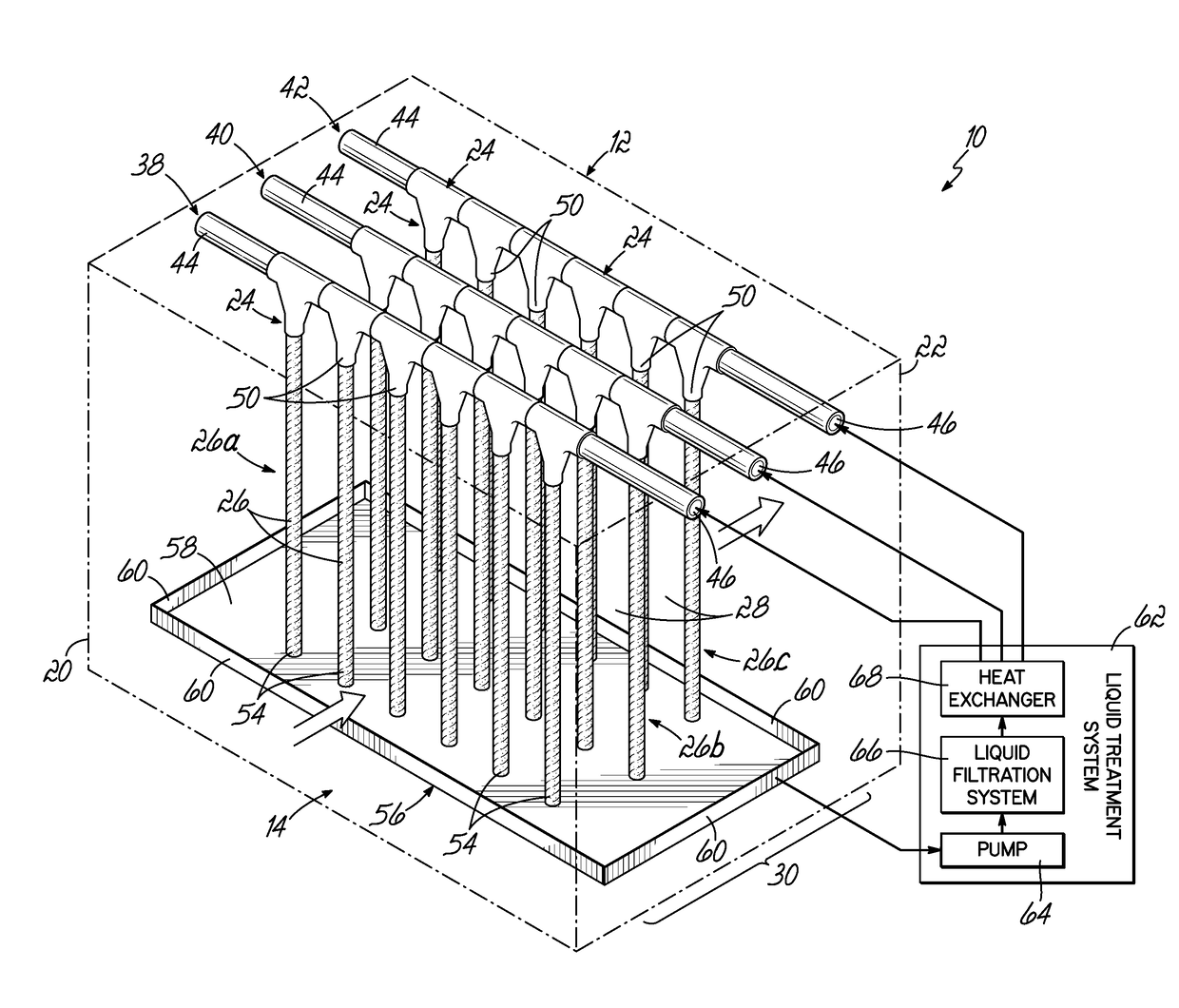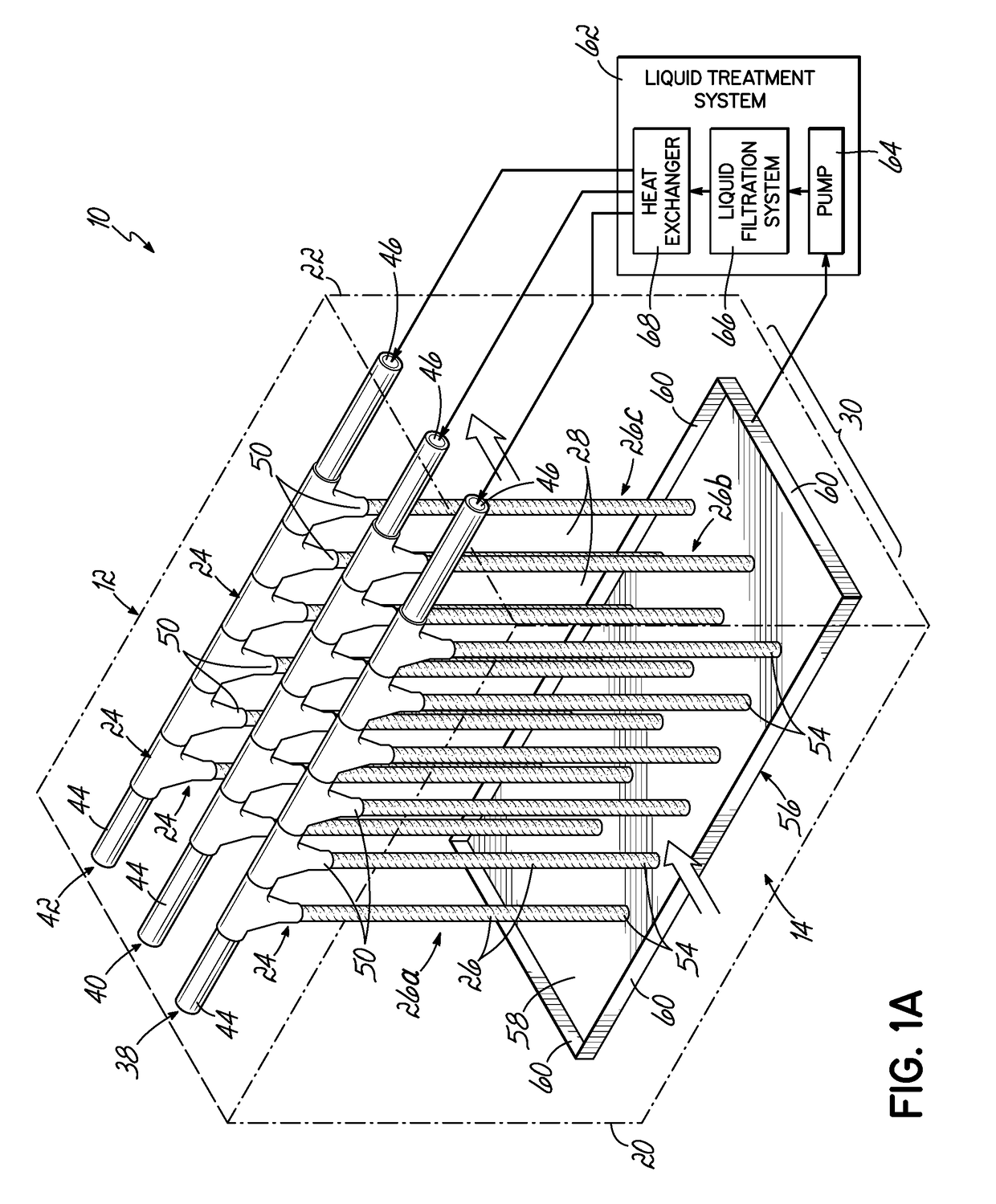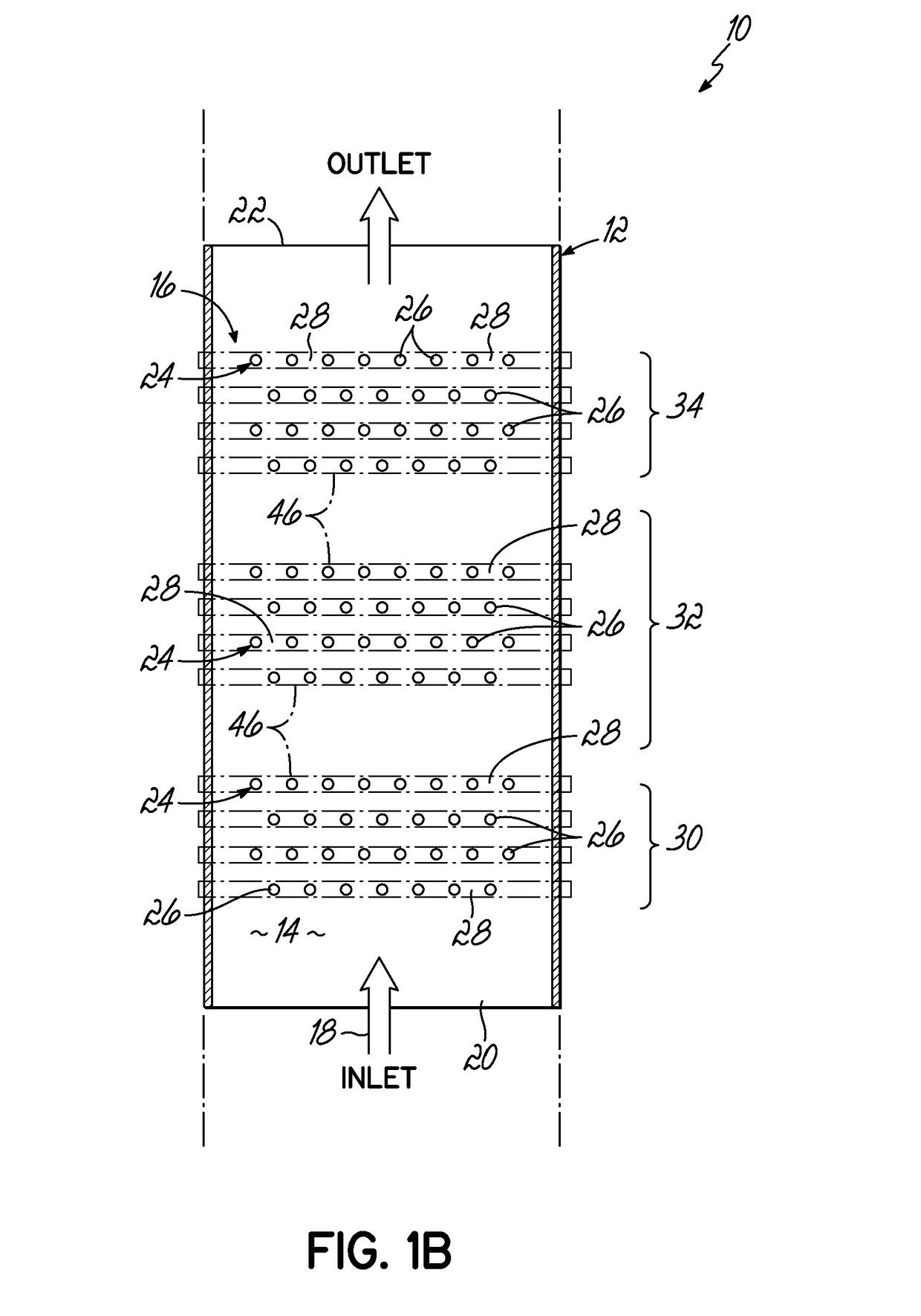Sieve array and precipitator device and method of treating exhaust
- Summary
- Abstract
- Description
- Claims
- Application Information
AI Technical Summary
Benefits of technology
Problems solved by technology
Method used
Image
Examples
example
[0090]A bench-scale test unit consisting of a 12 foot long inlet, 4 foot outlet and 2 foot long test section between the two. The test section houses two or eight 1-inch thick sieves, set three inches apart. Each sieve consists of 30 polypropylene 5-mm ropes (actually it is a single rope, which is looped through holes) distanced 10 mm center to center, occupying 30×12-inch space with the total area of 360 square inches=0.23 square meters. Ropes in the neighboring sieves were aligned, not staggered,
[0091]In order to be able to apply variable tension force to the rope(s), on top a single rope is looped through holes in a thick hollow beam which could move up or down. Tension in the rope(s) was 25, 35 or 45 pounds.
[0092]PVC pipes were used to deliver water running down the strings. The amount of water used in all tests was 0.75 liters per minute per cell, in all cells.
[0093]The 3-micron fly ash with concentration ranging from 30 to 70 mg / m̂3 was injected into air at the inlet using SCH...
PUM
| Property | Measurement | Unit |
|---|---|---|
| Frequency | aaaaa | aaaaa |
| Mass | aaaaa | aaaaa |
| Mass | aaaaa | aaaaa |
Abstract
Description
Claims
Application Information
 Login to View More
Login to View More - R&D
- Intellectual Property
- Life Sciences
- Materials
- Tech Scout
- Unparalleled Data Quality
- Higher Quality Content
- 60% Fewer Hallucinations
Browse by: Latest US Patents, China's latest patents, Technical Efficacy Thesaurus, Application Domain, Technology Topic, Popular Technical Reports.
© 2025 PatSnap. All rights reserved.Legal|Privacy policy|Modern Slavery Act Transparency Statement|Sitemap|About US| Contact US: help@patsnap.com



